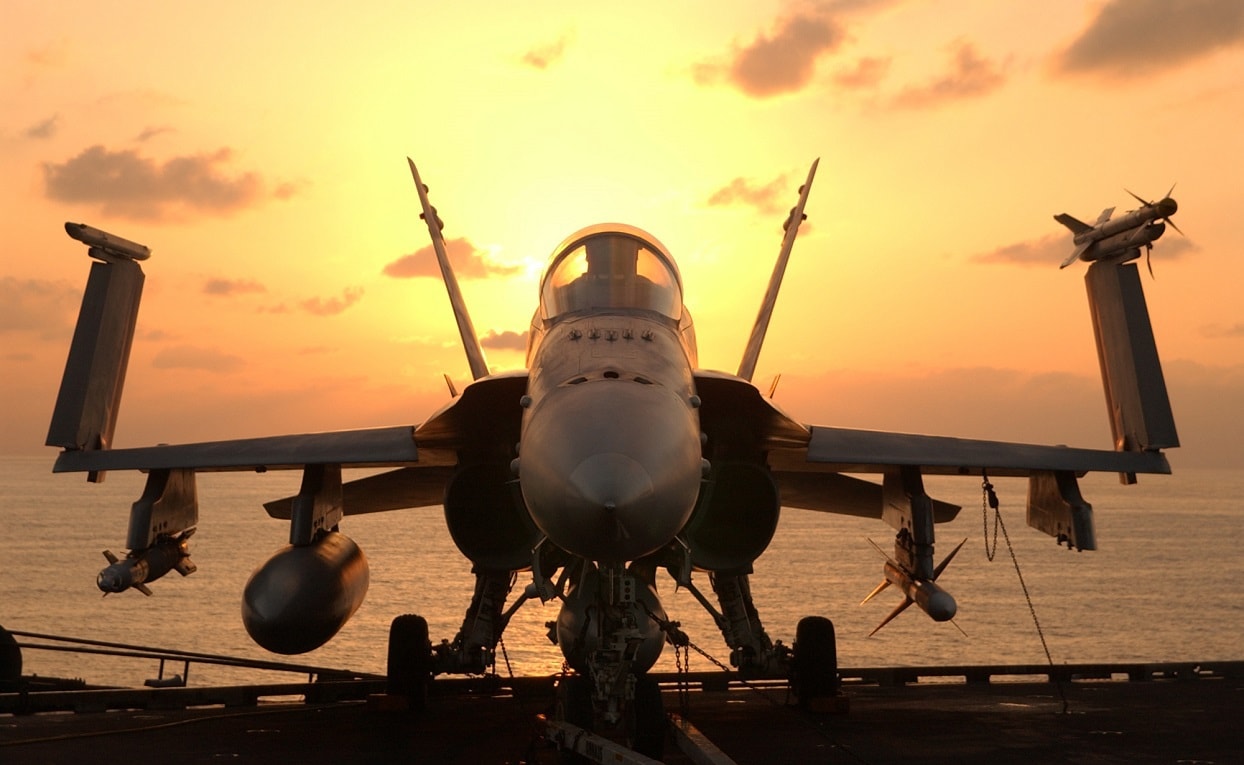U.S. Navy intercepts missiles headed toward Israel – Since the terror group Hamas launched its large-scale surprise attack in Israel on October 7, American and Israeli officials have warned that other regional actors could exploit the ongoing war.
The Lebanese-based Hezbollah group has already launched dozens of rockets and projectiles targeting Israeli military assets in the country’s north and Tehran has threatened to wage a “holy war” against the Jewish state.
In order to deter these hostile actors from perpetuating an all-out crisis, the U.S. and other European allies have deployed carrier strike groups to the eastern Mediterranean.
Based on recent events, however, Hezbollah may not be the only Iranian-linked proxy group eager to enter the Israeli-Hamas war.
The U.S. Navy Responds
On Thursday, a U.S. Navy destroyer intercepted several missiles launched near Yemen’s coast.
According to the Department of Defense spokesperson Brig. Gen. Pat Ryder, a guided missile destroyer, shot down three land attack cruise missiles and a few drones over the Northern Red Sea.
The Iranian-backed Houthi rebels are the culprits behind the brazen barrage, indicating Tehran is using its regional tentacles to insert itself further in the conflict. The fact that the U.S. military directly engaged in the attack to defend Israel is also telling.
The White House has been adamant since October 7 that the U.S. will defend Israel and its mission to eliminate Hamas and has followed through actionable for the first time.
“This action was a demonstration of the integrated air and missile defense architecture that we built in the Middle East and that we are prepared to utilize whenever necessary to protect our partners and our interest in this important region,” Ryder said at a news briefing. “There were no casualties to US forces and none that we know of to any civilians on the ground.” Although DoD could not confirm that the attack was intended for the Jewish state, Ryder did assert that these missiles and drones were fired potentially toward targets in Israel.
Iran’s Proxy Groups Ramp Up Attacks in Middle East
One day prior to the Yemen launch, two drones were launched toward the al-Tanf garrison in Syria, where American and other anti-ISIS coalition troops are based. Earlier this week, other drones were fired targeting the al-Asad airbase.
These upticks in attacks across the region are certainly related to Israel’s siege of Gaza and America’s commitment to the Jewish state. On numerous occasions, the White House has emphasized that states or proxy groups that take advantage of the crisis unfolding in the region should “not doubt the resolve of the United States.”
Following the Yemen-launched barrage, the U.S. Navy is sending its most advanced aircraft carrier group, led by the USS Gerald Ford, to the eastern Med. This action will make it much easier and quicker for advanced attack jets and sea-to-land missiles to be deployed to the region as necessary. However, deterrence only works well when not perceived as a bluff from foreign actors. Hopefully, the USS Carney’s recent engagement will indicate the U.S. will step up to fulfill its promise to defend Israel when it can.
The War in Yemen
The Houthi militants first took control of Yemen’s northern Saana province in 2014, embroiling the country in a civil conflict that has lasted almost a decade.
Similar to its modus operandi in other countries, Iran began deeply entrenching itself in Yemen in the early 2000s by exploiting a power vacuum.
From that point onwards, Iran steadily increased its contributions to the Houthi’s strategy. I
ran uses complex smuggling routes to transfer weaponry to its proxy group in Yemen and distributes weapons components, which militants then combine with domestic products or other imports to construct weapon systems.
As detailed by War on the Rocks, “They assemble these parts into working weapons with technical assistance from Hezbollah and Islamic Revolutionary Guard Corps advisers. This approach has allowed the Houthis to now field short and long-range drones and an increasingly diversified fleet of missiles capable of striking deep inside Saudi Arabia. Houthi forces have also used Chinese-made C-801 anti-ship missiles, with a range of 42 kilometers, for attacks on tankers in the Red Sea. These missiles were part of the national army’s arsenal prior to 2014 and were seized during the war. But they were quite possibly modified further with Iranian or Hezbollah assistance.”
Iran’s entrenchment in the Middle East is deep, making the potential for a wider war more probable as the crisis unfolds.
Maya Carlin, a Senior Editor for 19FortyFive, is an analyst with the Center for Security Policy and a former Anna Sobol Levy Fellow at IDC Herzliya in Israel. She has by-lines in many publications, including The National Interest, Jerusalem Post, and Times of Israel. You can follow her on Twitter: @MayaCarlin.

